Pets and Their People Blog
Make Every Walk with Your Dog Fun for Both of You!
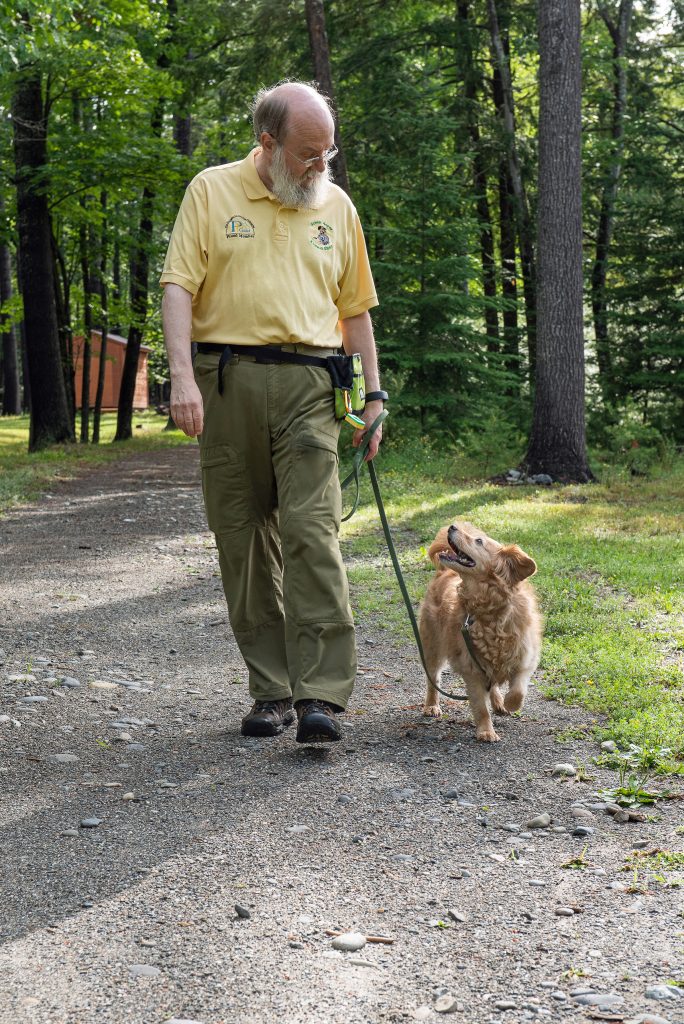
of Bell’s Furry Friends
Photography)
Walking the dog. Wikipedia describes dog walking as “…the act of a person walking with a dog, typically from the dog’s residence and then returning.” Sadly, the definition suggests nothing about the walk being enjoyable or, better yet, fun for the dog.
Some people might view walking the dog as an obligation to ensure dogs get physical exercise, which entails walking around the block or some other regular course, at an unvarying pace, with the dog in a perfect heel position. That’s not the type of walk where your dog will thrive.
People call me, saying, “The dog makes my walk miserable. I like to go as fast as possible, without stopping, while listening to my favorite music, an audible book, or chatting with a friend.” That’s when I tell them they must take two walks: one for themselves and one for the dog.
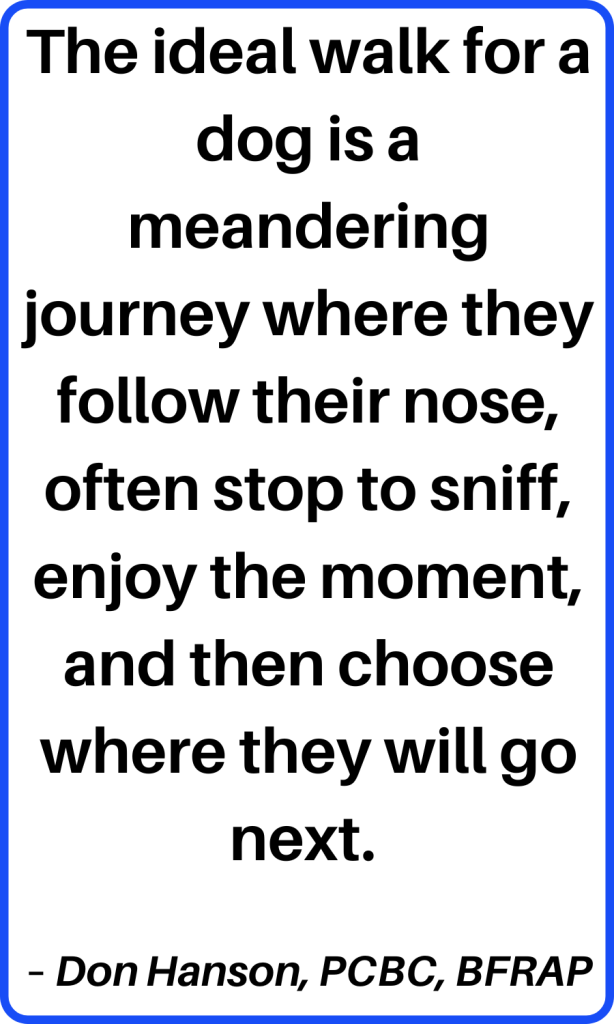
Let Them Sniff
Walking in lockstep with another living being is NOT normal canine behavior. As our pet’s life partner, one of our responsibilities is to ensure they have ample opportunity to exhibit normal behaviors for their species. The ideal walk for a dog is a meandering journey where they follow their noses, often stop to sniff, enjoy the moment, and then choose where they will go next.
Our dog’s mental health benefits considerably when we can give them choices, just like we do best when we have a choice. Please! Give dogs choices! Allow them to stop and sniff. It’s what makes their walks with you joyful.
Planning Eases Stress on Walks
Also remember, when we take our dogs for a walk, we are responsible for keeping them and the public safe. The following are my safety recommendations:
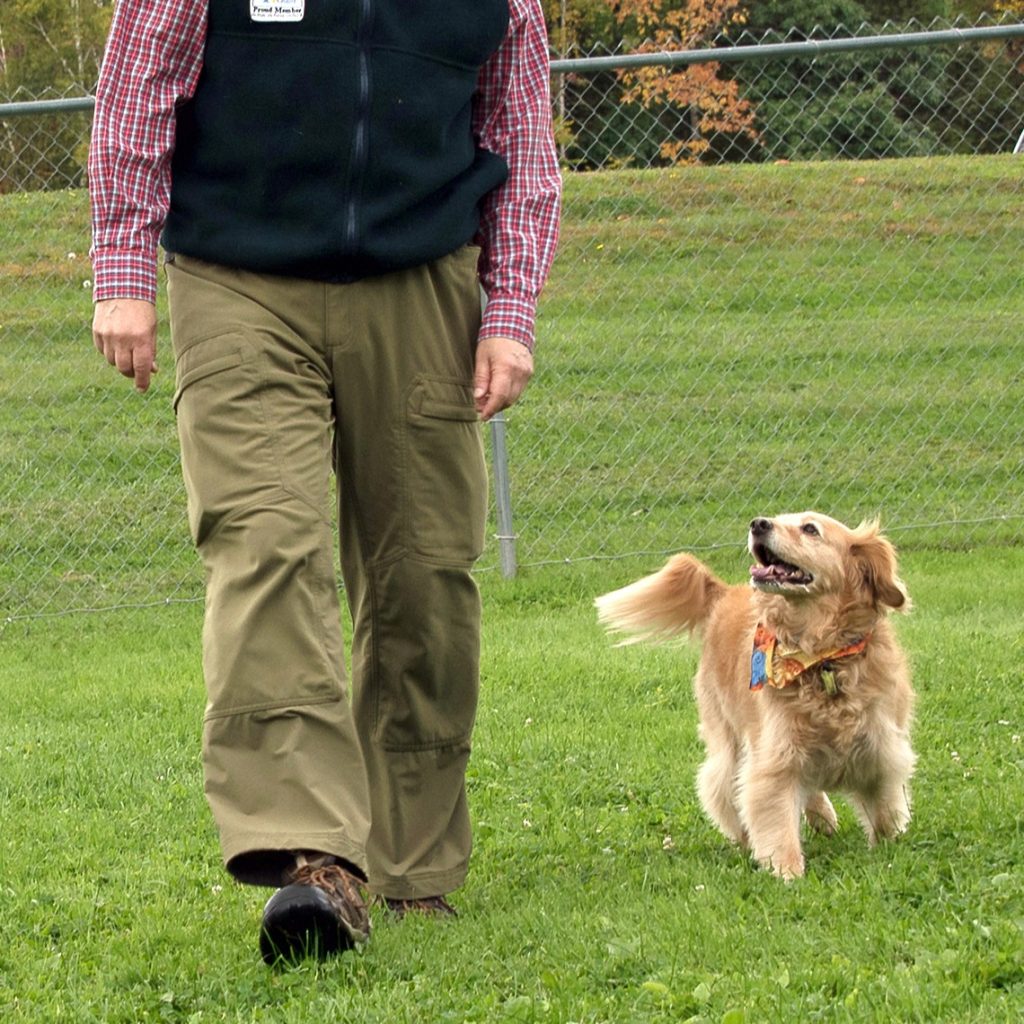
- Walk one dog at a time.
- Make sure your dog wears an appropriately fitted harness or regular collar. Shock, prong, and choke collars must never be used.
- Walk on your own two feet and do NOT ride a bicycle, scooter, skateboard, or roller skates, which offer less control and put your dog, you, and others at greater risk.
- Attach a leash to your dog’s harness or collar. If you are walking among people, I recommend a 6-foot leash. If you are walking somewhere where you can give your dog the freedom to explore and sniff, a 10 to 20-foot leash may be appropriate.
- Never use a retractable leash, as they are easy to drop and have been known to cause severe injuries to dogs and people.
- Always remain focused on your dog and the surrounding environment. Do not allow yourself to get distracted by listening to music or interacting with your phone.
- Ensure you are familiar with canine body language and constantly monitor your dog for signs of stress and discomfort. If a dog sits and no longer moves, or jumps on you and bites at the leash, they may be trying to tell you they are done and want to go home.
- Be aware of the signs of heat exhaustion, heatstroke, and hypothermia, and be prepared to stop walking immediately if you see them.
- Be prepared to carry your dog back home or at least to your car or someplace you can shelter if he or she cannot continue due to illness or injury. This is especially important if you are hiking with your dog out in the willy-wags, where assistance and a cell signal may not be available.
- Always carry water with you and your dog. Avoid allowing your dog to drink from public water bowls or waterways, as these may cause illness.
- If you allow your dog to be off-leash, ensure you are in an area where you are legally permitted to do so and understand you may be putting your dog’s life at risk.
- Be conscious of how the environment may affect your dog’s enjoyment of the walk.
- Is the asphalt too hot? If it’s too hot for the palm of your hand, it’s too hot for your dog’s feet!
- Is the snow and slush too cold or icy? Can you hold your hand on the ice for a minute? Are you wearing grippers? If yes, walking your dog may not be a good idea until the weather changes.
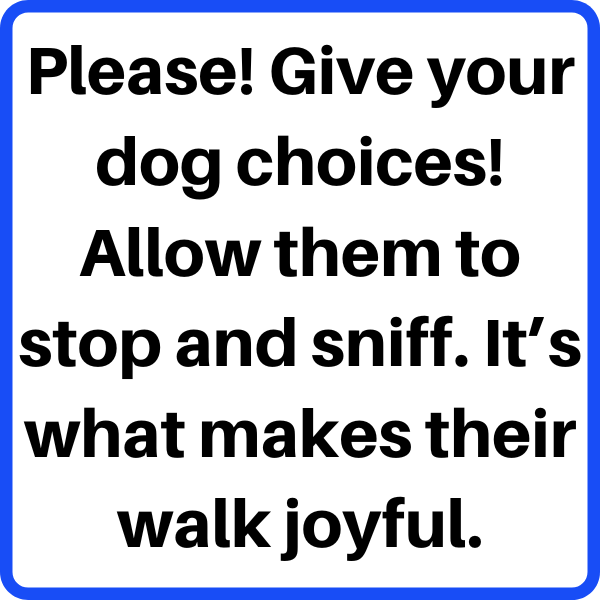
If my recommendations seem overly stringent, it’s because I do not want you or your dog, or any other living thing, injured or killed because you were not prepared or did not have your dog under active supervision. When it comes to the law, you are the one responsible.
Walking With Your Dog
As long as toileting needs are met, understand that your dog does not need a walk for physical exercise, provided you can give them ample time to run and explore in a fenced-in yard under your supervision. You can also play many fun sniffing games with your dog indoors to provide daily enrichment.
However, when done correctly, walking with your dog can be an excellent time for bonding and enjoying one another’s company. So, please make sure every walk with your dog is fun for both of you. If you’re not quite there, work with a credentialed, positive-reinforcement professional dog trainer to help you. Your dog and you will be pleased.
About the Author
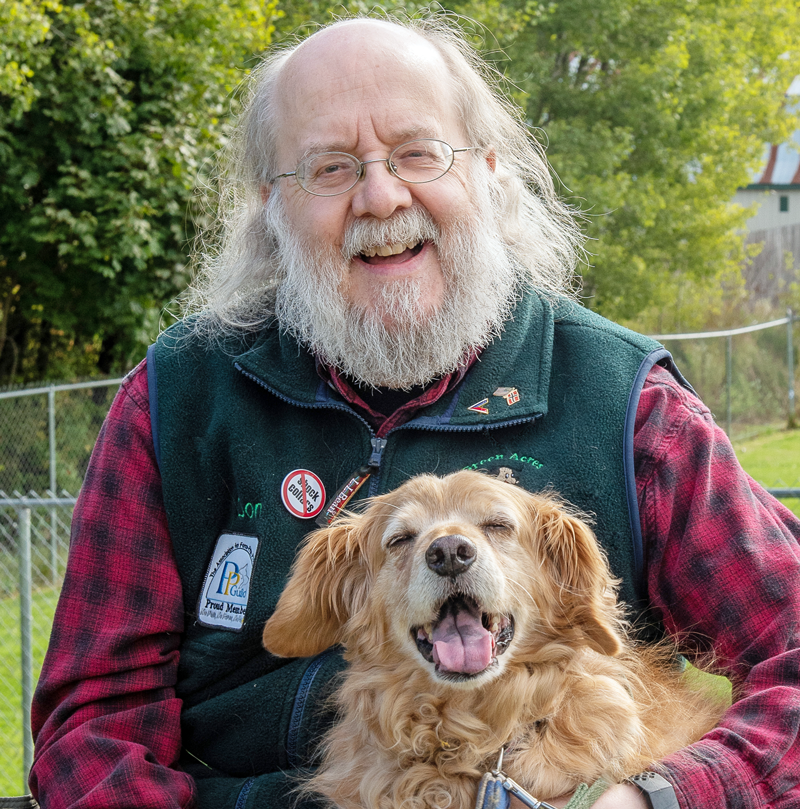
Don Hanson lives in Bangor, Maine, where he is the co-owner of the Green Acres Kennel Shop and the founder of ForceFreePets.com, an online educational resource for people with dogs and cats. He is a Professional Canine Behavior Consultant (PCBC-A) accredited by the Pet Professional Accreditation Board (PPAB) and a Bach Foundation Registered Animal Practitioner (BFRAP). A Pet Professional Guild (PPG) member, Don serves on the Board of Directors and Steering Committee and chairs the Advocacy Task Force and Shock-Free Coalition. He is also a founding director of Pet Industry Advocacy International (PIAI).
The opinions in this article are those of Don Hanson.
©2025, Donald J. Hanson, All Rights Reserved

